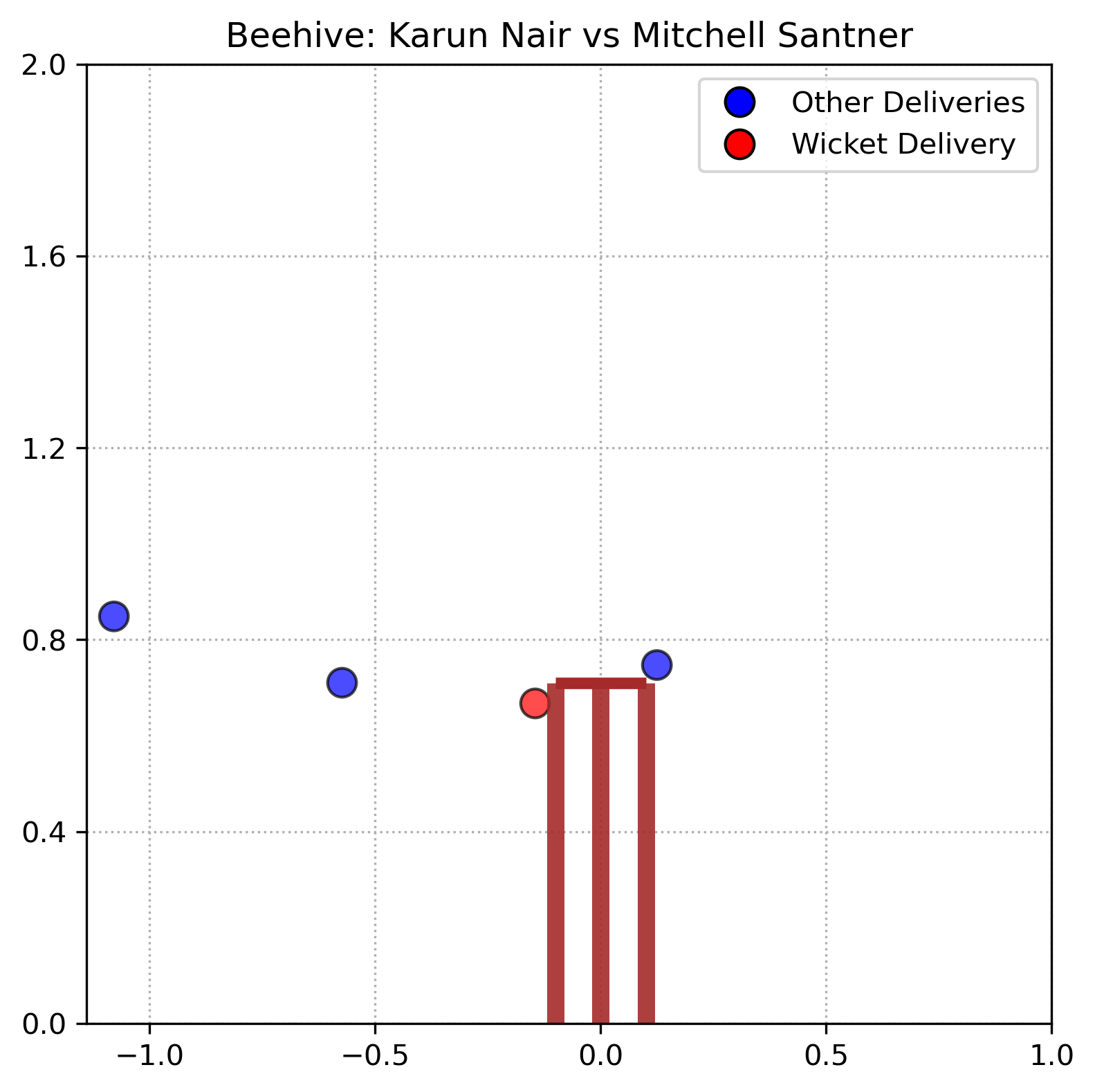
It was a perfect ball, precisely what was needed to dismiss Karun Nair last night.

By the time Mitchell Santner was introduced in the seventh over, Karun Nair had already raced away to 50 (22) in the powerplay. He had hit eight boundaries and two maximums. Before this game, Santner had an economy rate of 9.21 while taking only a solitary wicket in five matches.
But there was some turn for spinners in Delhi, as is mostly the case. Delhi Capitals’ tweakers extracted 2.29° of turn in the first innings. Last year, the same number was 1.76° in the first dig at the same venue.
That turn increased in the second innings (3.23°), and Santner extracted it straightaway. So, Nair was rightly cautious and didn’t go after him, as he was doing against all other bowlers. On the first delivery off the Kiwi spinner, Nair simply went on the back foot and punched down the ground for a single.
Santner immediately noticed that Nair was pressing off the back foot, so he slowed it down further on the next delivery. He bowled a 77 km/h length delivery to entice the batter to hit down the ground, and the ball gripped 0.49. He also bowled wide outside off-stump to give a chance of stumping if the batter missed it, but Nair again safely played it out for a single.
ALSO READ:
When he returned for his next over, he bowled a drag-down delivery, again hoping for high turn, which he extracted at 6.76°. But this was so wide and slow that the batter had all the time to rock back. He bisected the fielders at long-on and deep midwicket for a boundary. The second and third balls generated a small pattern: both were slow and wide to extract turn; the third was too short, the fifth shortest of Santner’s spell.
At this point, Santner realised Nair would play percentage cricket against him. The only way to dismiss him was by getting past his defence. So, he increased his pace to 89.93 km/h for the next delivery. It was a massive difference from the previous two bowled at 77.05 km/h and 78.52 km/h, respectively. He went wide of the crease, with a distance of 1.22 meters compared to 1.07 meters and 1.16 meters on the previous two balls.
The initial angle shows the horizontal angle between the ball’s path at release and a straight line between the stumps on either end. A more negative value means the ball is more angled in. The wicket delivery had an initial angle of -4.48° compared to -0.72° and -3.44° on the previous two balls. So, it was angled in, but a higher speed meant the ball wouldn’t turn as much as the other deliveries. Santner also bowled it fuller (5.84 meters) than the last one (7.03 meters).
Finally, it landed on that immaculate length and didn’t deviate as much as the previous two balls. There was a turn of 4.50° and a drift of 0.93. It was not high, but not as much as others. The line was also the straightest Santner bowled to Nair. The ball dipped at -1.42 m/s2; the previous two deliveries dipped at 0.36 m/s2 and 0.65 m/s2, respectively.

Nair went off the back foot again but couldn’t adjust since the ball was quicker. Another thing is that on the wicket delivery, the dip is negative. It indicates that the ball landed closer than the batter expected. It was a perfect ball, precisely what was needed to dismiss Karun Nair last night.
For more updates, follow CricXtasy on Facebook, Instagram, Twitter, Telegram, and YouTube.